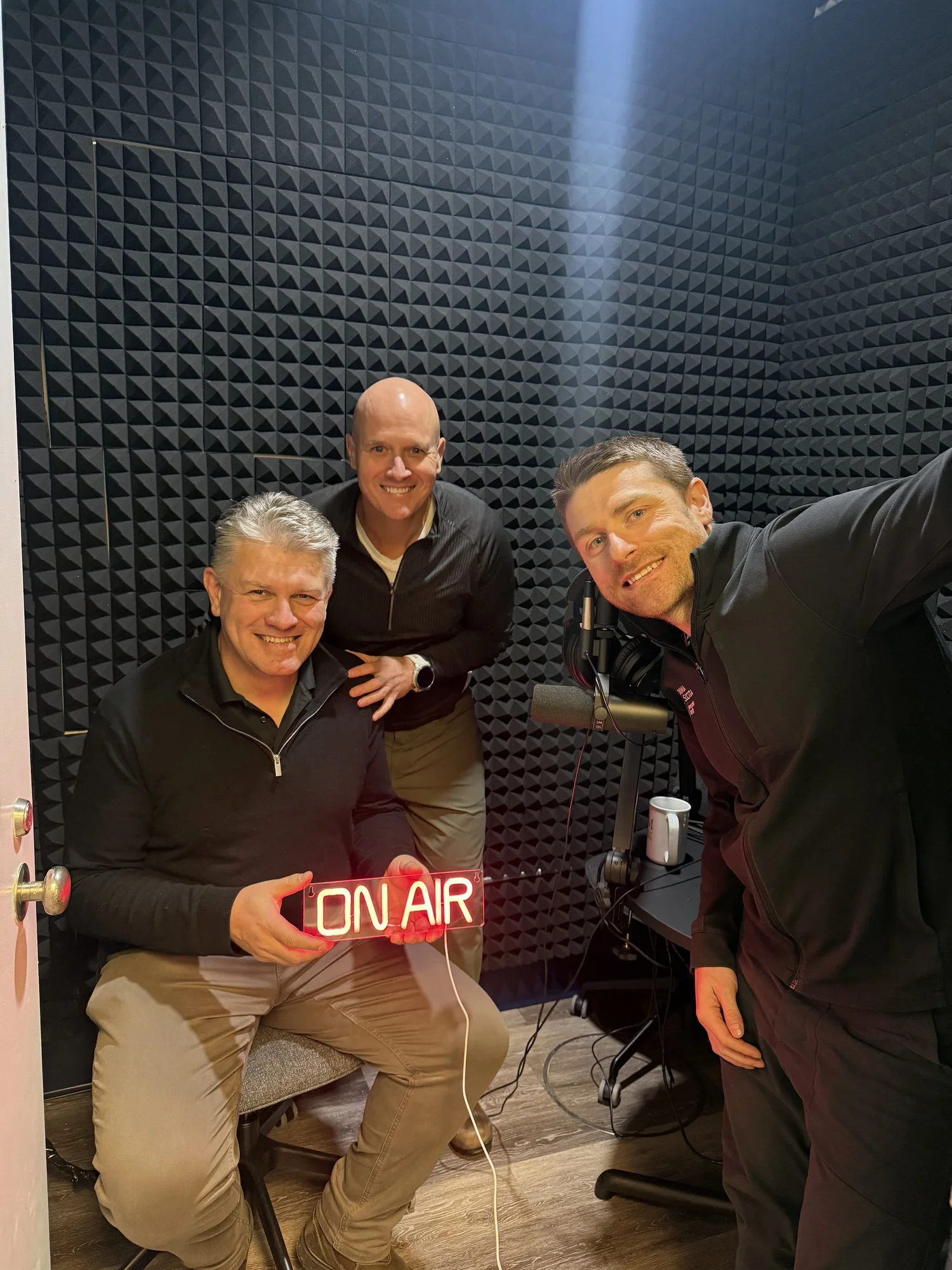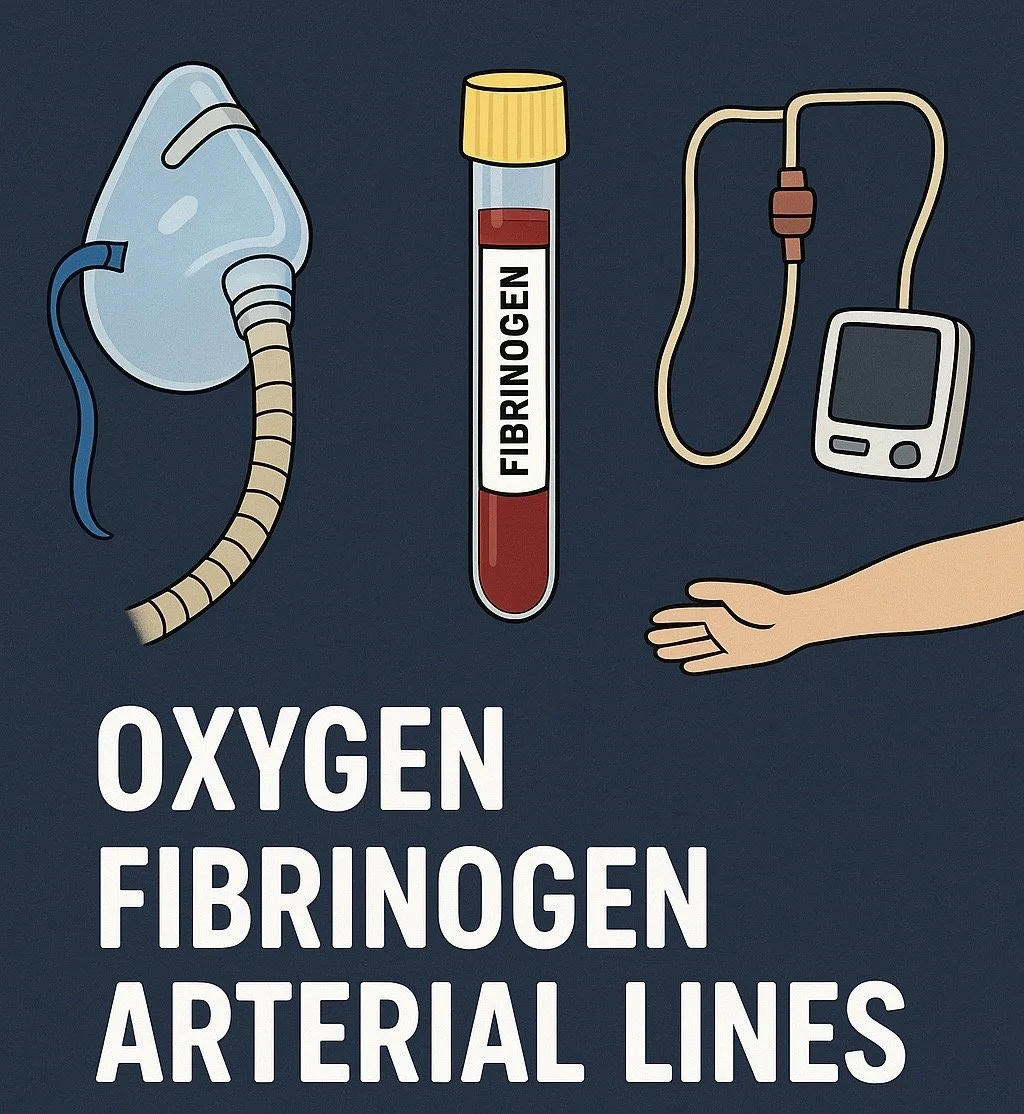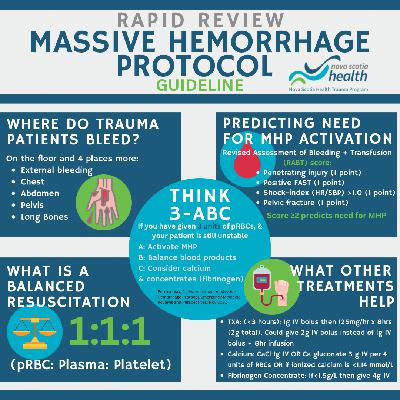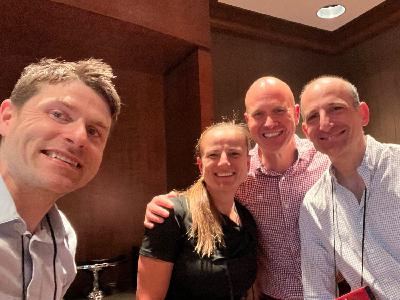Discover TRAUMA-ING
TRAUMA-ING

TRAUMA-ING
Author: James Gould
Subscribed: 2Played: 8Subscribe
Share
Description
"TRAUMA-ING” a podcast where trauma docs James Gould and Rob Green dive deep into the intricate world of managing critically ill trauma patients. Join us for an exciting and educational journey, as we hear from expert guests and explore evidence-based practices, from essential procedures to the latest journal article reviews. Whether you’re a seasoned professional or new to trauma care, our mission is to equip you with the knowledge and tools you need to make a real difference in your practice. Tune in and elevate your understanding of trauma management!
20 Episodes
Reverse
In this trauma-ing episode, we sit down with Dr. Paul Atkinson to explore compassionomics—the science behind why compassion matters in healthcare. Dr. Atkinson breaks down the critical differences between sympathy, empathy, and compassion, and explains how compassion goes beyond feeling to action. We discuss the growing evidence that compassionate care improves patient outcomes, strengthens trust in our trauma system, and enhances team performance. Importantly, he also reframes compassion as a protective strategy for clinicians, showing how it can reduce moral distress and help guard against burnout rather than contribute to it. This episode is a timely reminder that compassion is not a soft skill, but a measurable, system-level intervention that benefits patients and providers alike.For more FOAM trauma stuff go to www.trauma-ing.com
James and Rob sit down with Dr. Matthew Mackin for a Trauma-ing episode that digs into his recent trauma fellowship at the legendary R Adams Cowley Shock Trauma Center in Baltimore. Now back home as one of our trauma team leaders and trauma consultants—and bringing his anesthesiology expertise with him—Matt shares what life was really like inside one of the busiest trauma centres in the world. We explore the practices and culture he hopes to transplant into our own system, including a renewed emphasis on subclavian lines during resuscitation, broader use of regional anesthesia, and several other high-impact habits from Shock Trauma’s playbook.For more FOAM trauma related content head to www.trauma-ing.com
In this Trauma-ing Journal Club episode, we break down three timely studies shaping trauma care at the bedside and in the bay. First, we look at Perera et al.’s prehospital comparison of non-invasive versus arterial blood pressure monitoring, where NIBP consistently missed the mark in both shock and hypertension—who then should get art lines and when? We then dive into the TRAUMOX2 randomized trial, which challenges our instinct to “turn the oxygen up,” showing no mortality difference between restrictive and liberal oxygen strategies but hinting at fewer pulmonary complications with moderate targets. Finally, we unpack Burt et al.’s meta-analysis on early fibrinogen replacement in traumatic haemorrhage, finding no clear mortality or transfusion benefit despite its widespread use and highlighting the need for stronger evidence in the sickest, most coagulopathic patients.Go to www.trauma-ing.com for more FOAM trauma stuff
In this special live episode of Trauma-ing, James and Rob sat down with Mitchell and his dad, Bob, to revisit their incredible journey following a devastating MVC five years ago that left Mitchell with a severe TBI. Initially, his injuries were so grave that organ donation was discussed—but thanks to the dedication of our trauma system and the care teams across the QEII Health Sciences Center, he’s now living independently. Together, we explored their experience from the moment of the crash through rehabilitation, highlighting what went well, what mattered most to them along the way, and their advice to healthcare providers caring for patients and families facing similar life-altering injuries.
In this special episode of Trauma-ing with Dr. James Gould and Dr. Rob Green, we unpack the new Trauma Nova Scotia (TNS) cervical spine clearance pathway—a bold, evidence-driven initiative aimed at optimizing cervical spine assessment in trauma patients. Join Dr. Gould and Dr. Green as they walk you through the rationale behind the pathwayFor more FOAM trauma related content go to www.trauma-ing.com
In this Trauma-ing episode, Rob and I dig into the Massive Hemorrhage Protocol—when to activate, balancing blood products, and key elements like calcium, fibrinogen, and labs—along with a look at the lethal triad versus the lethal diamond and how these shape bedside decisions.Check out www.trauma-ing.com for more FOAM trauma content
Welcome to the very first Rapid Infuser episode—where we give you a fast push of trauma knowledge, straight lined into your brain. This time we’re talking about the rapid infusers themselves: the Belmont and the Level 1. We’ll hit the highlights on how they work, and drop a few clinical pearls that’ll help you keep blood moving when it matters most. Short, sharp, and just enough volume to keep your brain perfused. Check out this link here for steps on priming the BelmontFor more FOAM trauma related content go to www.trauma-ing.com
In this episode, Dr. James Gould and Dr. Rob Green are joined by trauma experts Dr. Luis Da Luz and Dr. Christian Malo for a lively discussion of the Top Ten Trauma Papers of 2024. The team tackles three of the standout publications from this year’s list, diving into the clinical relevance, methodology, and controversies behind the data.This is the third installment in the podcast’s Journal Club series — perfect for trauma clinicians, learners, and anyone interested in how evidence shapes practice on the front lines.Head to www.trauma-ing.com for more trauma related FOAM. And for a complete list of the top 10 trauma papers of 2024
In this episode, James Gould and Dr. Rob Green are joined by Steve Crocker, Critical Care Paramedic with EHS LifeFlight, for a deep dive into the world of critical care transport in Nova Scotia. Originally recorded as part of a Dalhousie University Critical Care Medicine Fellow Half-Day, this candid discussion explores how trauma patients move through our system—from the roadside to tertiary care. With insights from Steve’s front-line experience and reflections from our CCM fellows, we unpack the logistics, challenges, and collaborative efforts that define high-stakes transport in our region.For more FOAM trauma related content go to www.trauma-ing.com
In this episode of Trauma-ing, clinical pharmacist Alex Smithers joins us to break down antibiotic management for open fractures. We cover the go-to use of cefazolin, then dig into how antibiotic choices shift based on patient risk factors and the Gustilo-Anderson classification. A practical, case-based discussion for anyone involved in the early management of traumatic injuries.For more FOAM trauma related content head to www.trauma-ing.com
In this episode, Dr. Jason Emsley joins us to tackle one of the most challenging areas of emergency care—pediatric trauma resuscitation. Are kids just small adults, or do they require a fundamentally different approach? We explore the key differences in anatomy, physiology, and clinical decision-making, while also discussing practical strategies for high-stakes pediatric trauma situations. Whether you’re a seasoned trauma provider or new to pediatrics, this episode will challenge assumptions and sharpen your resuscitation skills.For more FOAM trauma related content head to www.trauma-ing.com
In this episode, Dr. Safraz Mohammed joins us to break down the critical aspects of spinal cord injury—from initial presentation in the emergency department to acute management strategies. We explore key decision points, common pitfalls, and evidence-informed practices that can improve outcomes. Whether you’re at the bedside or in training, this discussion offers practical insights for managing one of trauma’s most high-stakes scenarios.For more trauma-focused content and resources, visit www.trauma-ing.com.
In this Trauma-Pharma segment, clinical pharmacist Alex Smithers joins us again to unpack the approach to seizure prophylaxis in traumatic brain injury (TBI). She covers who actually needs seizure prevention, why Keppra (levetiracetam) is commonly used, and how to get the dosing right. Practical, evidence-based, and focused — everything you need to sharpen your trauma care.Check out www.trauma-ing.com for more FOAM trauma related content
Join us as Lynda Foster and Dr. Leeor Sommer share innovative approaches to geriatric trauma care they’ve implemented at their hospital. From enhanced triage protocols to optimized pain management, this episode is packed with insights you won’t want to miss!For more trauma content, check out www.trauma-ing.com
The amazingly impressive Dr. Stephanie Smith is here to talk about preparing yourself and your team for a trauma patient. She explores the stress response and how to combat that. Drawing for her experiences as am emerg doc, military doc, former trauma nurse and competitive triathlete and adventure racer. Check out her other content on YouTube: https://youtube.com/@stephaniesmith3790?si=HEi3q3EeNFsJjMrU For more FOAM trauma related content go to www.trauma-ing.com
In this episode we chat with Alex Smithers, trauma pharmacist, about the importance of calcium in trauma care. For more FOAM trauma related content go to www.trauma-ing.com
James reads an awesome poem to Rob, and then they talk about permissive hypotension in trauma resuscitations. What is the ideal MAP or SBP in hemorrhagic shock? what about with a head injury? What if your patient old? What if you have no blood products?For more FOAM trauma related content head to www.trauma-ing.com or subscribe to the podcast
Rob and James chat about the uselessness of a DRE in trauma resuscitation. They cover a recent systematic review on the test characteristics of the DRE and make a strong plea to providers to abandon this invasive, unnecessary test.For more free open access trauma related content, subscribe to the podcast and/or head to www.trauma-ing.com
James and Rob cover a paper on DSI vs RSI in trauma patients. Essentially, does giving ketamine to dissociate patients for preoxygenation of 3 minutes prior to paralytic improve incidence of peri-intubation hypoxia and other adverse events. Take home - ketamine in this population is typically hemodynamically neutral and maintains spontaneous breathing. Its use in trauma airway management can facilitate not only adequate preoxygenation, but also patient assessment, and other resuscitative measures before intubation. For more FOAM trauma related content head to www.trauma-ing.com
James and Rob cover audience questions including prebreifing your trauma team, decompressing chests, and all the subtle details of a massive hemorrhage protocol.Stay tuned for more trauma related FOAM at our website www.trauma-ing.com or listen wherever you get your podcasts!
























